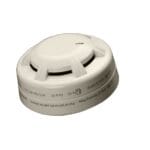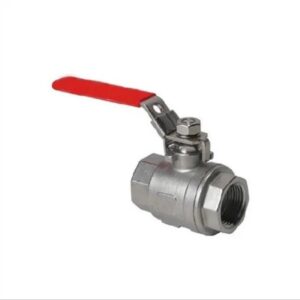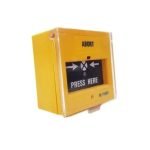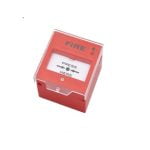Your list is empty, add products to the list to send a request
What Are the 4 Steps in Using a Fire Extinguisher PASS?

25
Jun
When a fire breaks out, every second matters. Knowing how to use a fire extinguisher quickly and confidently can make a life-saving difference. The most widely accepted and easy-to-remember method for operating a fire extinguisher is the PASS technique.
This article will guide you through the four PASS steps, explain the types of extinguishing agents used, and provide key safety tips and FAQs. Whether you’re at home, work, or a public facility, understanding this method ensures you’re ready to respond effectively.
What Does PASS Stand For in Fire Safety?
PASS is an acronym that breaks down the process of using a fire extinguisher into four simple actions:
1. Pull the Pin
- Pull the pin at the top of the extinguisher.
- This will break the tamper seal and allow you to discharge the extinguisher.
2. Aim the Nozzle
- Aim low, pointing the nozzle or hose at the base of the fire.
- Hitting the flames is ineffective—you must target the source.
3. Squeeze the Handle
- Squeeze the handle slowly and evenly.
- This releases the extinguishing agent.
4. Sweep Side to Side
- Sweep the nozzle side to side at the base of the fire.
- Continue until the fire is out or the extinguisher is empty.
How to Use a Fire Extinguisher PASS Effectively
To use the PASS method successfully:
- Stand about 6 to 8 feet from the fire.
- Always keep an escape route behind you.
- Ensure the fire is small and contained.
- Know the fire class before attempting to extinguish.
What Is the Full Form of PASS in Fire?
The full form of PASS is:
- P – Pull the pin
- A – Aim the nozzle at the base of the fire
- S – Squeeze the handle
- S – Sweep side to side
This simple mnemonic helps users remember the steps under pressure.
Why PASS Is Critical for Fire Extinguisher Safety
Using a fire extinguisher improperly can worsen a fire or place the user in danger. PASS helps:
- Improve response time
- Reduce panic in emergencies
- Maximize extinguisher efficiency
- Save lives and protect property
Training all employees or family members in PASS is essential.
Which Gas Is Used in a Fire Extinguisher?
Different fire extinguishers use various agents based on fire class:
- CO2 (Carbon Dioxide) – Used in CO2 extinguishers for Class B and C fires. Leaves no residue.
- Nitrogen – Often used to pressurize ABC and water-type extinguishers.
- Clean Agents (Halotron, FM-200) – Used in specialty clean agent extinguishers.
- Water and Foam – For Class A fires.
The Agni Hunt CO2 Fire Extinguisher uses both water and carbon dioxide for effective suppression of Class A and B fires.
Types of Fire Extinguishers Compatible with PASS
All portable fire extinguishers operated manually use the PASS method:
- Water extinguishers (Class A)
- Foam extinguishers (Class A & B)
- Dry powder/ABC extinguishers (Class A, B, C)
- CO2 extinguishers (Class B & C)
Each of these is designed for specific environments and fire types.
When to Use a Fire Extinguisher
Use a fire extinguisher if:
- The fire is small and localized
- You know the fire class and matching extinguisher type
- You have completed fire safety training
- You have a clear, unobstructed exit path
If the fire is large or spreading, evacuate immediately and call emergency services.
Safety Tips for Using the PASS Method
- Always check the pressure gauge during monthly inspections.
- Do not test discharge unless supervised by professionals.
- Avoid using on incorrect fire classes (e.g., water on electrical fires).
- After use, recharge or replace the extinguisher promptly.
Maintenance of Fire Extinguishers
To ensure the extinguisher is ready:
- Inspect monthly
- Service professionally once a year
- Replace every 10–15 years (check manufacturer guidelines)
- Refill after any use
Models like the Agni Hunt CO2 are ISI-certified, reliable, and designed for easy maintenance.
Key Features of Agni Hunt CO2 Fire Extinguisher
- Suitable for Class A and B fires
- Dual-agent system: combines water cooling and CO2 displacement
- ISI-marked for Indian safety standards
- Ideal for schools, offices, warehouses, and homes
Click here to explore product details
Conclusion: Learn PASS, Save Lives
Understanding the 4 steps in using a fire extinguisher—Pull, Aim, Squeeze, Sweep—can empower anyone to act quickly during a fire emergency. Whether at home or in the workplace, practicing the PASS method and maintaining your extinguisher regularly is essential.
Choose a reliable extinguisher like the Agni Hunt CO2 Fire Extinguisher to ensure you’re always ready for the unexpected.
FAQs
1. How to use fire extinguisher PASS?
Pull the pin, Aim at the base of the fire, Squeeze the handle, and Sweep side to side. This method is known as the PASS technique.
2. What is the full form of PASS in fire?
PASS stands for Pull, Aim, Squeeze, and Sweep. It’s a four-step guide to using a fire extinguisher effectively.
3. Which gas is used in a fire extinguisher?
Common gases include Carbon Dioxide (CO2) and Nitrogen. CO2 is used in CO2 extinguishers for electrical and flammable liquid fires, while nitrogen often pressurizes ABC types.
Preparedness begins with knowledge.
Equip your property with the Agni Hunt Fire Extinguisher from fire supplies and train everyone in the PASS method today.



























